 Jewish Movie Stars Jewish Movie Stars
In the 1940s, it was obligatory for Jews in the performing arts, especially the movies, to hide their Jewishness behind Gentile names.
 Ella Geisman became June Allyson; Ella Geisman became June Allyson;
 Bette Perske, Lauren Bacall; Bette Perske, Lauren Bacall;
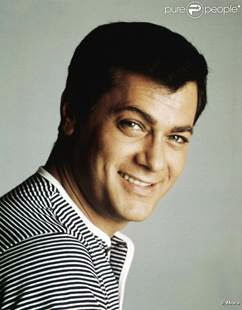 Bernie Schwartz, Tony Curtis; Bernie Schwartz, Tony Curtis;
 Issur Danielovich, Kirk Douglas; Issur Danielovich, Kirk Douglas;
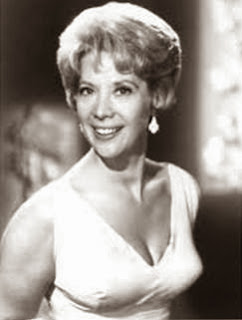 Frances Rose Schorr, Dinah Shore; Frances Rose Schorr, Dinah Shore;
 Marion Levy, Paulette Goddard; Marion Levy, Paulette Goddard;
 Muni Weissenkopf, Paul Muni; Muni Weissenkopf, Paul Muni;
 Julie Garfinkel, John Garfield; Julie Garfinkel, John Garfield;
 Allan Koenigsberg, Woody Allen; Allan Koenigsberg, Woody Allen;
 Benny Kubelsky, Jack Benny; Benny Kubelsky, Jack Benny;
 Asa Yoelson, Al Jolson; Asa Yoelson, Al Jolson;
 Charles Bushinsky, Charles Bronson; Charles Bushinsky, Charles Bronson;
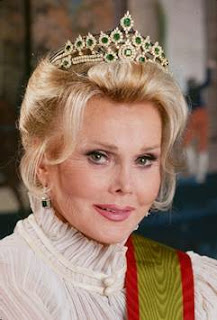 Sara Gabor, Zsa Zsa Gabor; Sara Gabor, Zsa Zsa Gabor;
 Larry Leach, Cary Grant; Larry Leach, Cary Grant;
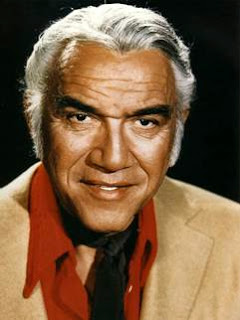 Chaim Liebovitz, Lorne Green; Chaim Liebovitz, Lorne Green;
 David Kaminsky, Danny Kaye; David Kaminsky, Danny Kaye;
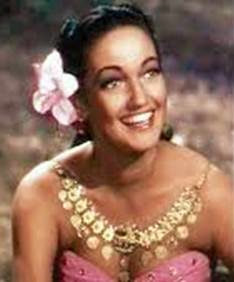 Dorothy Kaumeyer, Dorothy Lamour; Dorothy Kaumeyer, Dorothy Lamour;
 Mike Orowitz, Michael Landon; Mike Orowitz, Michael Landon;
 Joseph Levitch, Jerry Lewis; Joseph Levitch, Jerry Lewis;
 Leonard Rosenberg, Tony Randall; Leonard Rosenberg, Tony Randall;
 Tula Finklea, Cyd Charisse, etc., etc. Tula Finklea, Cyd Charisse, etc., etc.
The easiest name transition of all, from Jew to Irishman, was made by
 Lee Jacob, to Lee J. Cobb. Lee Jacob, to Lee J. Cobb.
He hardly needed to change his stationery. (Which reminds me of the story of the little old Jewish lady named Perlowitz who didn’t show up at the fancy party thrown by her son, the Park Avenue doctor, because she had forgotten his new name,Prescott.)
It is interesting to note that in their personal, off-screen relationships - within "The Family"-- Hollywood and Broadway performers, producers, and moguls always used their Yiddish given names. It was only from the American public at large that they felt compelled to hide their Jewish identity.
Beginning in the early sixties to today, though, Jews no longer feel they have to assume artificial identities to achieve success, although there are still some “throwbacks,” well-known movie stars today who have traded in their Jewish names --
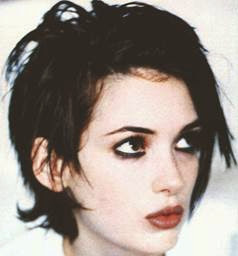 Laura Horowitz for Wynona Ryder, for example. Laura Horowitz for Wynona Ryder, for example.
 Jeff Goldblum is just one well-known Jewish actor who uses his real name. Jeff Goldblum is just one well-known Jewish actor who uses his real name.
And, of course, the very Jewish
 Jerry Seinfeld was just about the most popular TV sitcom of the 1990s. Jerry Seinfeld was just about the most popular TV sitcom of the 1990s.
So, the Golden Age of American Jewry can be defined as that period during which Jews began to feel secure enough to be Jews openly; the waning of that period can be defined by the erosion of Judaism caused by the very freedom American Jews have won to be Jews openly. The paradox is evident.
There is, by the way, a wonderful story about 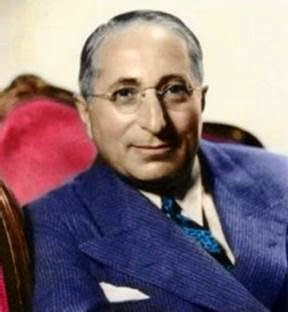 Louis B. Mayer, head of MGM and the most powerful man in 1930s and 1940s Hollywood, who did everything he could to run away from his Jewishness, except, interestingly enough, changing his Jewish name, to which he clung tenaciously. During the heyday of the Nelson Eddy – Jeanette MacDonald musicals, it seems that Mayer was dissatisfied with the lack of feeling MacDonald was putting into one of her duets with Eddy. He summoned her to his office and, telling her to watch him, he got down on his knees and intoned the beautiful and solemn Kol Nidre, the most moving prayer sung at Yom Kippur, the Day of Atonement, in which the Jew begs God to spare his life in the coming year despite all the sins he has committed. Louis B. Mayer, head of MGM and the most powerful man in 1930s and 1940s Hollywood, who did everything he could to run away from his Jewishness, except, interestingly enough, changing his Jewish name, to which he clung tenaciously. During the heyday of the Nelson Eddy – Jeanette MacDonald musicals, it seems that Mayer was dissatisfied with the lack of feeling MacDonald was putting into one of her duets with Eddy. He summoned her to his office and, telling her to watch him, he got down on his knees and intoned the beautiful and solemn Kol Nidre, the most moving prayer sung at Yom Kippur, the Day of Atonement, in which the Jew begs God to spare his life in the coming year despite all the sins he has committed.
As Mayer sang, his renegade Jewishness escaped from every pore, as tears poured down his cheeks. He was no longer the motion picture colossus, Louis B. Mayer, who commanded the livelihoods and careers of Clark Gable, James Stewart, Joan Crawford, Robert Taylor, Fred Astaire, Judy Garland, et al., but Louie, the shy little Jewish boy praying with his immigrant family in their tiny, ramshackle ghetto synagogue. That day in his palatial MGM office, when Mayer finally got up from the floor, drenched in sweat, he found Jeannette MacDonald too in tears. The story is that she went out and poured her heart into her duet. The Jew-Gentile-identity Hollywood hijinks of the 1930s produced some amusing incidents.
For example, in 1932 David Selznick (seven years before he created "Gone With The Wind") produced “Symphony of Six Million," a tearjerker about a brilliant young Jewish doctor from the Lower East Side who turns down fame and riches to dedicate his life to healing the poor. The ideal actor to portray the doctor, Selznick felt, would be a Jew who could be expected to “feel” the part and thus make it particularly authentic. But no Jewish actor was available, So, after much searching, Selznick cast as the idealistic doctor a young Latin actor named Ricardo Cortez, whose dark looks he thought were sufficiently Jewish-looking to be convincing to a movie audience. Cortez played the part so well that both he and the movie were acclaimed. Small wonder. Cortez’s real name was Jacob Krantz, and the story is that not even his costar, Irene Dunne, nor David Selznick, nor the critics, knew he was Jewish.
Also, a famous Broadway play of the late 1920s was “Counselor at Law.” A tale of a Jewish immigrant kid from the Lower East Side named George Simon who rises to become one of New York City ’s most powerful and so ught-after lawyers, the play starred Paul Muni as Simon. When Hollywood bought the play to turn it into a movie, its director, William Wyler, pleaded with Muni to play the part on the screen. Muni refused, because he feared being typecast as a Lower East Side Jew, which of course is exactly what he was. So the part went to that charismatic Gentile John Barrymore, who played it brilliantly. Nevertheless, already in the early stages of his alcohol-caused dementia, Barrymore had trouble learning the Yiddish phrases that would make him convincing as a New York Jew – phrases that Muni of course could toss off in his sleep.
|
|
|


























